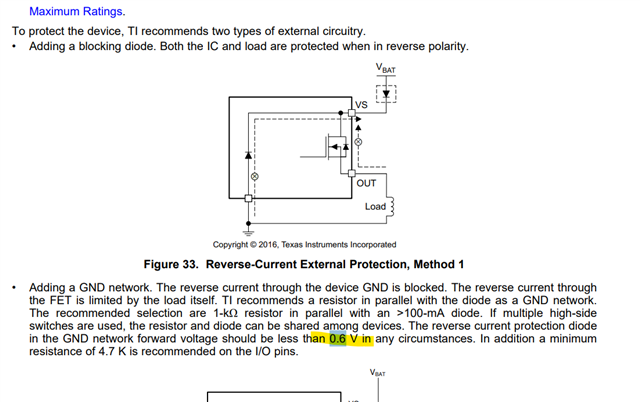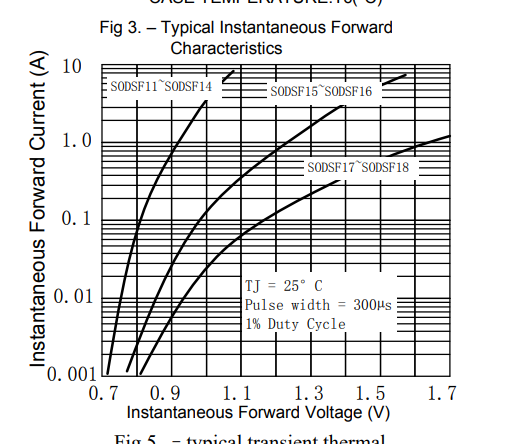Other Parts Discussed in Thread: TPS4HC120-Q1,
Tool/software:
Hi team,
I would like to check with you how to calculate the resistor(R839) and diode(D54) value for loss of GND protection circuit?

Thanks!
Ethan Wen
This thread has been locked.
If you have a related question, please click the "Ask a related question" button in the top right corner. The newly created question will be automatically linked to this question.
Tool/software:
Hi team,
I would like to check with you how to calculate the resistor(R839) and diode(D54) value for loss of GND protection circuit?

Thanks!
Ethan Wen
Ethan,
The resistor is fine- but the diode is going to risk triggering the loss of ground protection. The forward voltage drop needs to be <=0.6:

... and it looks like the forward voltage drop of this diode is significantly higher:

You can estimate about 10mA of current maximum.
Would the TPS4HC120-Q1 be an option here? It will be a significantly better price perspective and would not have the 0.6V diode restriction.
Best Regards,
Tim
Hi Tim,
Thanks for your reply.
Further question, how to calculate this resistor value? How customer can judge if this value works well?
It will be a significantly better price perspective and would not have the 0.6V diode restriction.
Why TPS4HC120-Q1 do not 0.6V restriction?
Regards,
Ethan Wen
Ethan,
It has to do with the way loss-of-ground is detected in the TPS4H160-Q1. For that device, there is a comparator that will compare a digital low signal with the potential on the IC ground. If it is greater than 0.6V (plus some margin), loss of ground protection is triggered. For TPS4HC120-Q1, the loss-of-ground mechanism was changed so the device does not have this limitation.
The resistor is there for loss-of-supply + inductive turn-off scenarios. If the resistance is too high in this case, the current will not have a path to go. I misread your schematic- you should have 1k. With a 10k resistance it's possible that during a loss of supply + inductive turn-off scenario, the resistance would be too high-impedance and the current would rather go through the MCU's ground (or something else shared on the ground plane).
Best Regards,
Tim